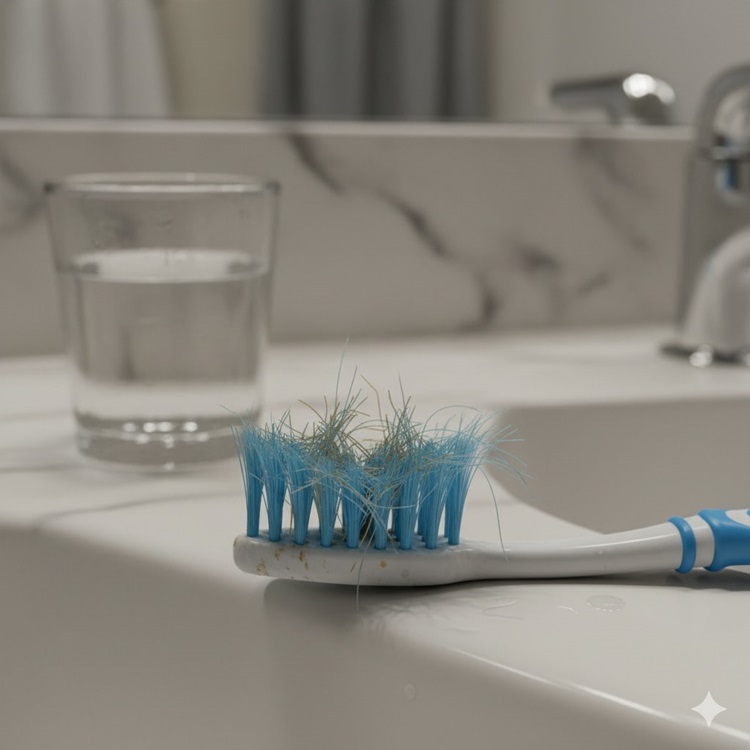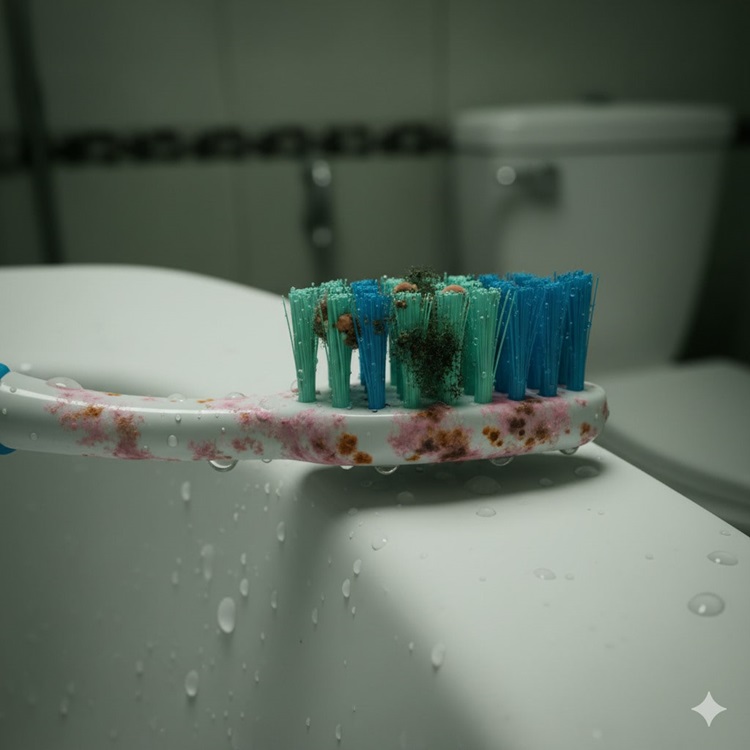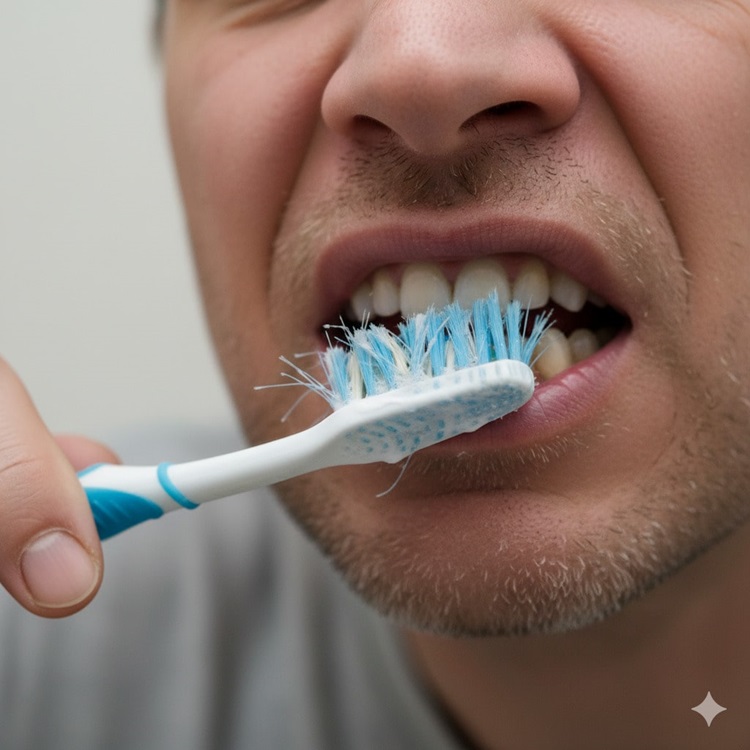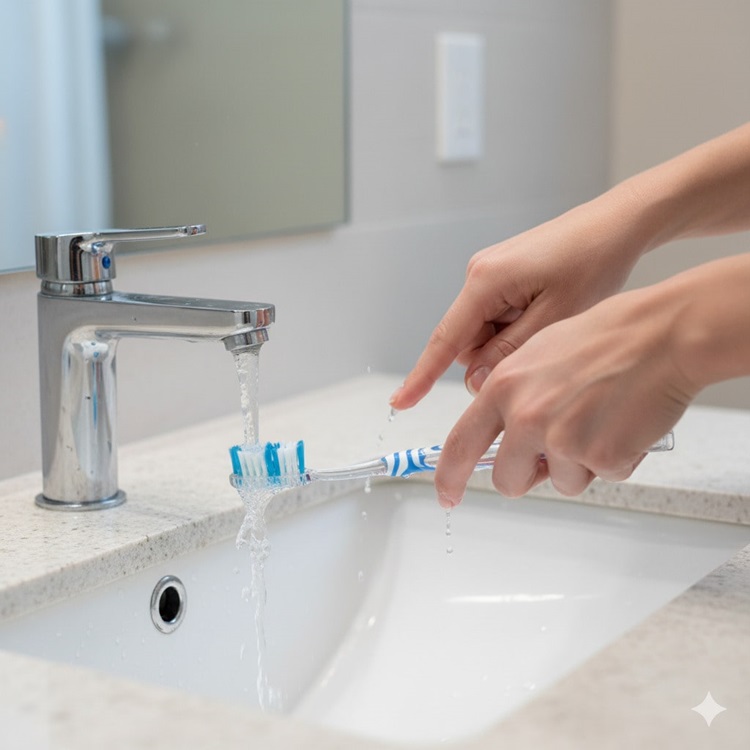How often should I replace my toothbrush? The short answer: every 3 to 4 months, or sooner if you notice worn-out bristles or have recently recovered from an illness. Regular replacement is one of the easiest ways to protect your gums and prevent plaque buildup, alongside professional Teeth Cleaning sessions that ensure deeper care. In this article, we’ll explain when to replace your toothbrush, warning signs that it’s time for a change, and how to extend the lifespan of your brush.
General Advice: What Is the Golden Ratio?
A simple and useful rule is to change your toothbrush or electric toothbrush head every 3 to 4 months. An interval like this is also recommended by well-known dental associations such as the American Dental Association because, after about three months, the cleaning capacity of the brush fibers decreases and the plaque-removing ability drops.
When Is It That I Need to Replace My Toothbrush Earlier?
The moment the bristles are bent or spread out or have changed color, it is necessary that you get a new toothbrush. Furthermore, if you have had a cold, flu, or any kind of infection lately, it is better that you get a new toothbrush after you are fully recovered.
In a situation where your toothbrush has been in contact with someone else’s toothbrush, or it has dropped on the floor or a place that is not clean, the best thing to do is to get a new one right away!
What is our suggestion?
| Age Group / Condition | Toothbrush Replacement Interval | Notes |
| Healthy Adults | Every 3 to 4 months | Recommended by the ADA if the bristles are still intact. |
| Children | Every 2 to 3 months | Bristles wear out faster due to rougher brushing. |
| After Illness | Immediately after recovery | Helps prevent reinfection or spreading germs. |
| Heavy Brushing Pressure | Sooner than 3 months | Bristles bend and fray more quickly. |
Ready for a Healthier Smile?
Due for a dental checkup or thinking it’s time to replace your toothbrush? At My Dentist Langley, we provide complete dental care to keep your teeth and gums in top shape.
Signs of Toothbrush Replacement
If you are halfway through your toothbrush’s lifespan, you might still be forced to change your toothbrush if some signs appear.
1. Worn or separated bristles

When toothbrush bristles are bent or separated, they apparently cannot reach the surfaces of your teeth anymore and clean them. Besides not properly removing plaque with worn bristles, they can also cause gum irritation and redness.
2. Bristles discolor
Some toothbrushes have bristles that lighten gradually in color to indicate that the toothbrush should be replaced. If your toothbrush is not equipped with such a feature, discoloration, a strange stain, or an unpleasant smell on the brush can also be a sign to get rid of the brush.
3. Teeth Are Not Fully Cleaned
If your teeth, after brushing, do not feel as smooth and clean as they used to be, it is a sign that the brush has lost its original effectiveness. The incomplete cleaning will cause plaque to accumulate on your teeth, thus your chances of getting cavities and gum disease will increase.
4. Storage is not proper

A toothbrush kept in a wet place or too close to the toilet is prone to bacterial and fungal growth. If there are changes on the toothbrush, such as a bad smell, stains, or mold, it is time to get rid of it.
✔️ Read more: ” Benefits of flossing your teeth“
What Happens If We Don’t Change Our Toothbrushes?

Bacteria and fungi are the main contaminants that accumulate in the bristles of your toothbrush; if this is not a sufficient reason to change it frequently, there are other possible health risks.
The worn bristles of an old toothbrush can no longer remove the plaque and bacteria that have deposited; thus, the risk of caries and gum inflammation increases. With the development of inflammation, gum disease, or even periodontitis, it can be your condition, depending on the stage of the disease. In severe stages, tooth loss can also occur.
✔️ Read more: “What Does a Cavity Look Like?“
How to Extend My Toothbrush Lifespan?
If you take proper care of your toothbrush, it will last you a long time, and it will not give you any trouble. Here are a few practical ways:
- After you finish brushing, wash it with water thoroughly; thus, any toothpaste and food particles can be removed.
- To totally dry the toothbrush and release the air, circulate it in a vertical position.
- Do not place your toothbrush in a closed and wet place, such as a small bag or a box; bacteria will grow rapidly in high humidity.
- Store the toothbrush in a well-ventilated place away from the sink or the toilet.
- Set toothbrushes that belong to members of your family apart from each other so that the heads do not contact one another (thus, there will be a minimum of bacteria transfer).
Note: It is not necessary to disinfect your toothbrush with mouthwash every time; however, if you want to be cautious after an illness, the best option is to replace it.
How To Clean Your Toothbrush?

After every brushing, make sure you first rinse your toothbrush with cold water and then with warm water so that the residue is removed. Deep cleaning with baking soda is also an option; just soak the bristles in a little baking soda and clean using a gentle motion, then rinse thoroughly with warm water.
That being said, you need to replace your toothbrush if it is old or you used it when you were sick. The cleanliness which is achieved with the aforesaid methods is only for the period of the toothbrush’s useful life.
“Antibacterial” Toothbrushes or Marketing Claims: What is the Truth?
Some toothbrushes or toothbrush sets come with the impression of being “antibacterial” or having the nano-coating. The fact is that scientific studies supporting these coatings as the main cause of disease risk reduction or the need for replacement are very limited, so instead of being fully guided by marketing claims, you’d better follow the signs of wear and care. The most reliable advice for when to replace is still the time between replacements (3–4 months).
✔️ Read more: “How to Take Care After Having a Dental Bridge“
Choosing the Right Toothbrush for Your Needs
The type of toothbrush you use should match your dental conditions, gum sensitivity, and even your lifestyle. The right choice can improve cleaning efficiency while also preventing issues such as irritation or gum inflammation.
| Need / Condition | Recommended Toothbrush Type | Benefits | Key Point |
| Sensitive teeth and gums | Toothbrush with soft bristles | Gentle on gums, prevents irritation | Make sure the bristles are not too firm |
| Whitening focus | Electric toothbrush with whitening mode | Better removal of surface stains, polishes teeth | Toothbrush with a small head and soft bristles |
| Deeper and more thorough cleaning | Electric toothbrush with timer and pressure sensor | Better control of brushing time and pressure, more effective plaque removal | Requires charging or batteries |
| Lower cost and simplicity | Manual toothbrush | Affordable, accessible, no charging needed | Must be used with proper technique and time |
| Children | Toothbrush with a small head and soft bristles | Fits a child’s mouth, easier to handle | Replace every 2–3 months, as it wears out faster |
Keep Your Oral Health on Track
So, the answer to how often I should replace my toothbrush is clear now: every 3–4 months. Following this routine helps you maintain better oral hygiene and lowers the risk of cavities or gum disease. If you’re looking for long-term care and trusted advice for the whole family, visiting a Family Dentist is the best way to complement your at-home routine and ensure everyone’s oral health stays on track.
FAQ
1. Is it a good idea to store your toothbrush in a plastic case or cap?
Plastic caps can actually trap moisture and create a great environment for bacteria to grow. It’s best to keep your toothbrush open and upright to allow it to air out and dry.
2. Can I sterilize my toothbrush in the dishwasher or microwave?
This is not recommended as it can damage the bristles. A simple rinse with water and, if necessary, an alcohol-free mouthwash is sufficient for disinfection.
3. Can I disinfect my toothbrush and replace it later?
Disinfecting may reduce some germs, but it doesn’t compensate for the mechanical wear and tear on the bristles. So regular replacement is still necessary.
4. How often should I replace my electric toothbrush?
The electric toothbrush itself doesn’t need to be replaced frequently, but its head or brush should be replaced every three to four months (or sooner if worn out), just like a manual toothbrush.
How often do you usually change your toothbrush? Share your experience in the comments. Your tip might help someone else improve their oral care routine!




